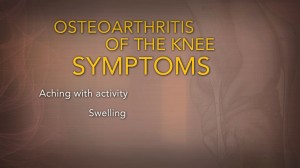NEW YORK (Reuters Health) – Intra-articular corticosteroids are a good early treatment for knee osteoarthritis pain, according to a meta-analysis by Boston-based researchers. However, hyaluronic acid injected into the knee joint appears to be more effective in the long term.
In the December 15th issue of Arthritis and Rheumatism, Dr. Timothy E. McAlindon of Tufts University School of Medicine and colleagues note that doctors often use corticosteroids to treat osteoarthritis, and that guidelines recommend them as an adjunctive treatment, but synthetic hyaluronic acid is also widely employed.
The researchers examined data from 7 randomized trials that compared the intra-articular use of these two agents. Five reported using intention-to-treat analysis, three were open-label, 3 were single-blind and 1 was double-blind. Methylprednisolone was used in 5 of the trials and triamcinolone in the other 2.
Doses of hyaluronic acid varied from 16 to 40 mg, given in three to five weekly injections. Most of the studies used three weekly steroid doses of 40 mg.
The findings – which pooled data involving more than 600 patients with osteoarthritis of the knee — favored corticosteroids in the first 2 weeks. At 4 weeks, both agents appeared to have similar efficacy. However, at 8 and 12 weeks the results favored hyaluronic acid (effect size, 0.22 and 0.35). This was also the case at 28 weeks (effect size, 0.39).
Various other data manipulations produced consistent results.
Exactly how synthetic hyaluronic acid blocks pain is unknown, the authors note, but it may improve the viscosity of synovial fluid and restore its shock-absorbing and lubricating abilities.
Overall, the investigators point out that awareness of the pattern of response to the agents “is useful to the clinician in formulating a therapeutic plan for patients with knee osteoarthritis.”
It may also be worth investigating, they conclude, “whether coadministration of the 2 agents has a synergistic effect that is useful in clinical practice.”
Reference:
Arthritis Rheum 2009;61:1704-1711.




